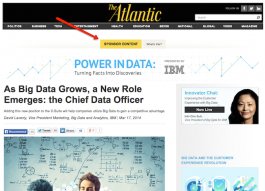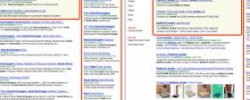If you’re in the advertising industry, “native” has probably been a consistent topic of conversation lately—perhaps in the context of, “What is this native advertising, anyway?”
Don’t be embarrassed if you’ve been one of the people wondering aloud about the definition of native advertising. Lots of high-level execs have asked me for mine; I tell them native advertising is content that’s embedded in—and often mimics—the environment where it’s found. It is not an “in your face” message that screams, “I’m an ad!” Sometimes subtlety can go a long way, even in the ad game.
One thing’s for certain: the concept has become one of the most influential industry trends, providing new inventory for publishers to monetize and a highly effective way to engage target audiences.
The task of defining exactly what native advertising means can be challenging. The IAB has drafted a more structured explanation of the six types of ad units that are most commonly deployed to “achieve native objectives.” They are: in-feed units, paid search units, recommendation units, promoted listings, in-ad units, and custom “can’t be contained” widgets.
That last category tells us that a native ad can be anything—not just an ad unit. The definition of native advertising is secondary to what the trend represents: an opportunity for brands to practice storytelling and build authentic relationships with their audiences.
Video, for example, provides an effective, engaging medium to bring these connections to life. Here are the three most important characteristics of a native video ad.
1. Native ads can take many forms
An advertorial is native advertising; as is “sponsored content” on a trade website. Even a safety video from Air New Zealand can be native when it’s found within a news article about airlines using humor to keep the attention of passengers who “tune out” during pre-flight safety videos.
They’re all native ads because each one seamlessly fits the environment around it. Often, they actually provide additional context about the editorial subject matter, even though an advertiser prepared that message and paid for its placement.
From where I stand, “native” also includes ads found in the Facebook News Feed. Of course, those ads are likely more intrusive because they won’t mimic your friends’ posts. But the ads are still part of the Facebook browsing experience. Of course, your definition could be different, and it might be something as simple as, “I know native when I see it.”
2. They’re editorially driven
Native video ads, often click-to-play and longer than 30 seconds, can both educate and entertain audiences. Hard-core salesmanship is secondary to the qualities that drive compelling online experiences—narratives and storytelling.
While TV commercials and traditional online video ads are generally product-centric and are examples of “push” marketing, native video ads are handcrafted by editorial, content, and creative teams that self-identify as journalists and researchers rather than sales-centric marketers. They’re engaging, loved—and as a result—highly shareable.
Granted, native ads can be outside the comfort zones of many brands. They have artistic qualities and are not purely optimized for the conversion funnel. It’s not about jamming a message down the consumer’s throat; the best native ads generate website visits, for example, because the user wants to find out more. It’s about engagement. Of course, an incentive—a coupon code or special sale—could push a user down the conversion funnel more quickly, and can be used – sensitively – along with native ads.
It’s still important to do the ROI calculations on native video. While an advertiser might not be in direct response mode during a native campaign, it’s easy to calculate cost-per-view, or CPV, and the cost-per-visit to a site, for instance. The cost per view might – at first glance – look expensive (see below) but native advertising done right is far more valuable than other forms of “push” advertising. For example, native video costs more than pre-roll video ads, but there’s a reason for that: native is a choice-based user experience; pre-roll video is content that a publisher foists upon visitors.
In a nutshell, here are the main differences between native vs “push” TV and video ads:
| Native Video | “Push” Video | |
|---|---|---|
| Format | Click-to-play (voluntary views) | Pre-roll (forces viewers to watch ad) |
| Length | Typically over 30 seconds | Typically 15 or 30 seconds |
| Marketing Goal | When you want viewers to take action after the video | Awareness |
| Cost-Per-View (CPV) | $0.20 – 0.25 | $0.10 – 0.12 |
| Clickthrough Rate (CTR) | 5-8% |








